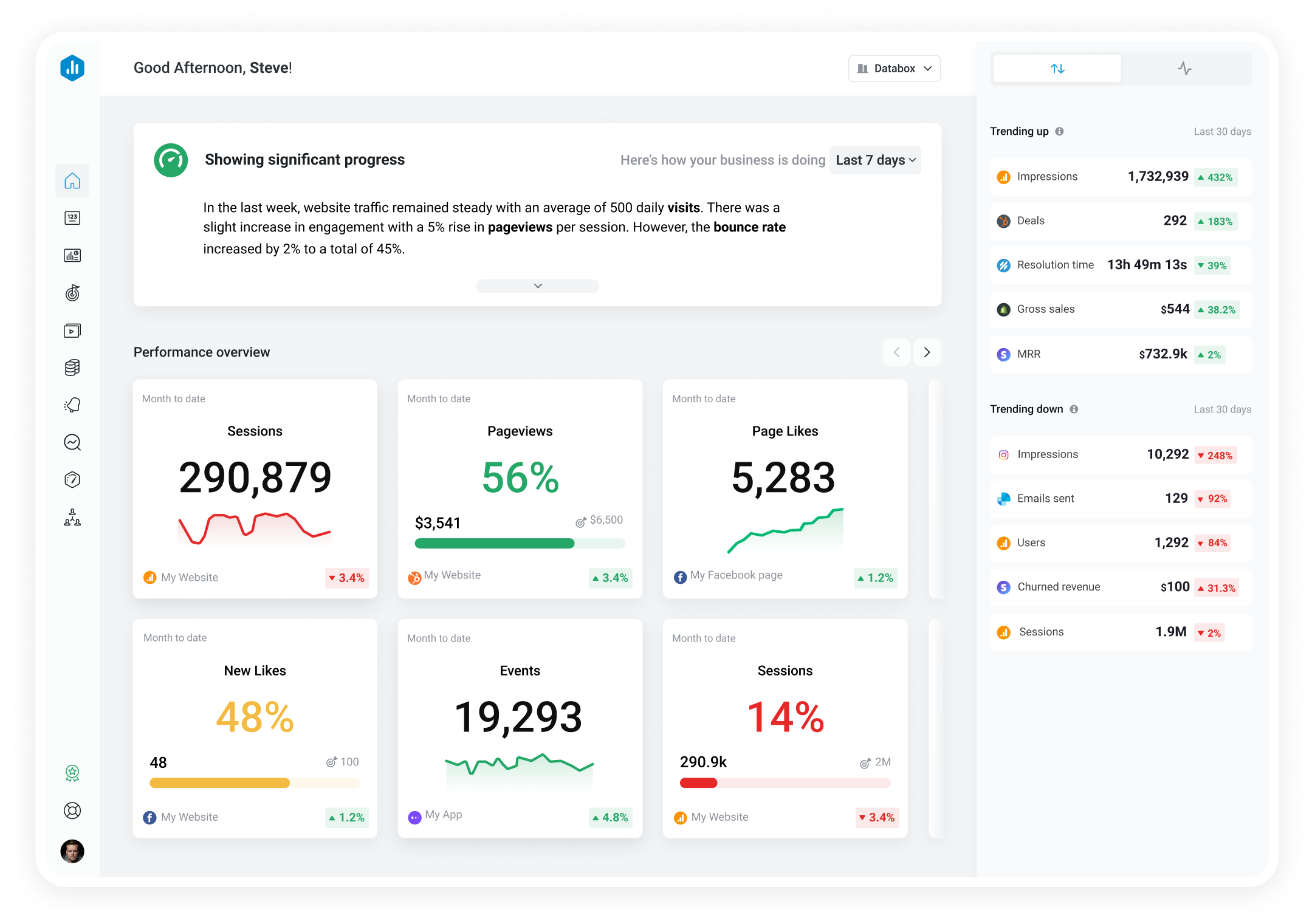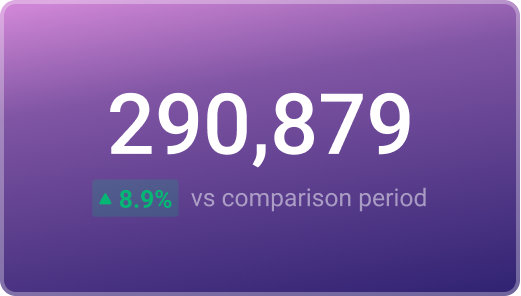Track all of your key business metrics from one screen
GET STARTED
 Intercom
Tags
Intercom
Tags The Tags metric in Intercom measures the number of tags assigned to conversations, users, and leads. It helps in organizing conversations and provides insights into user behavior and preferences.
With Databox you can track all your metrics from various data sources in one place.

Used to show a simple Metric or to draw attention to one key number.
Databox is a business analytics software that allows you to track and visualize your most important metrics from any data source in one centralized platform.
To track Tags using Databox, follow these steps:
 Goals
Goals Scorecards
Scorecards Metric Digest
Metric Digest Metric Builder
Metric Builder Data Calculations
Data Calculations Performance Screen
Performance Screen